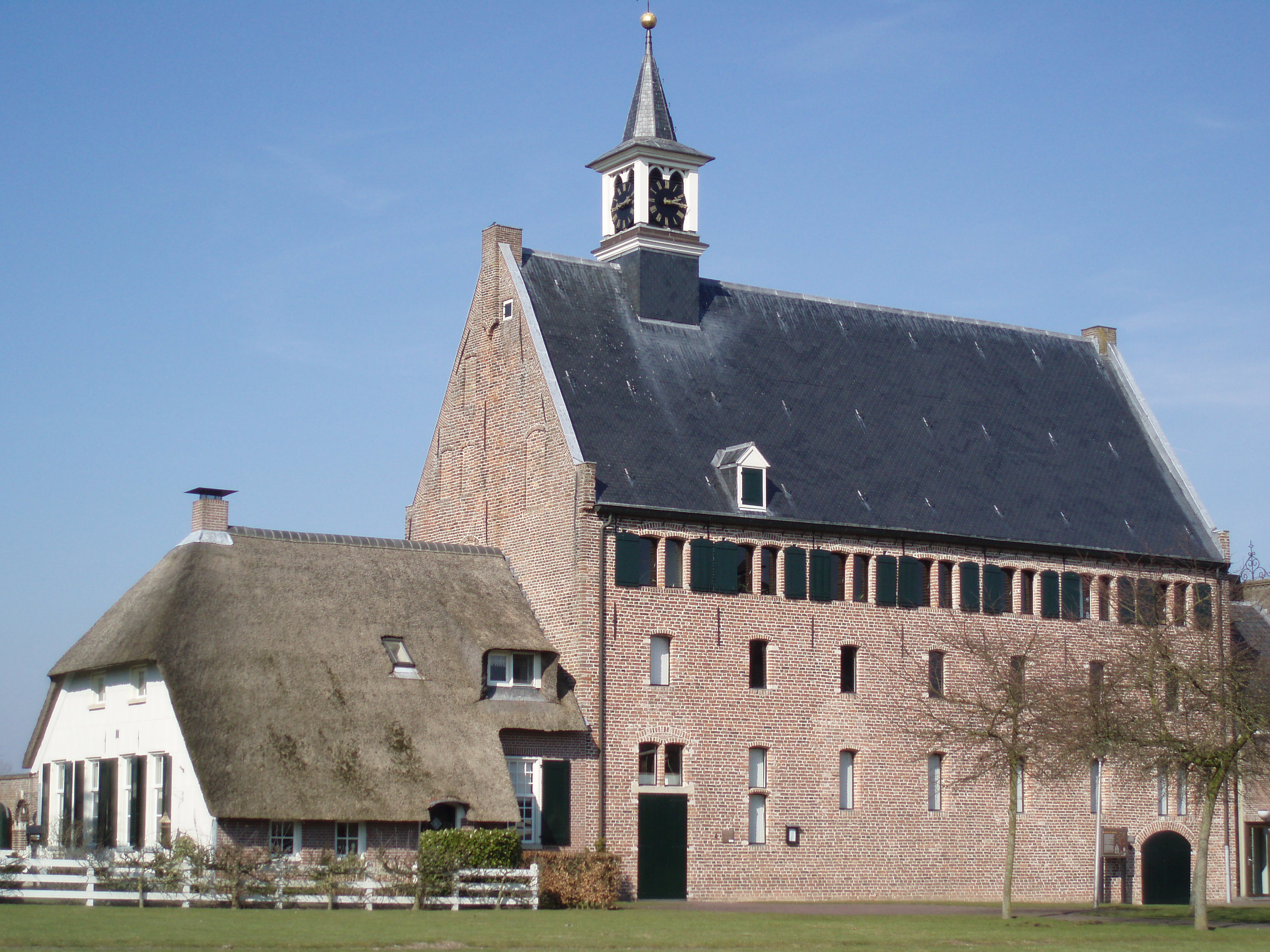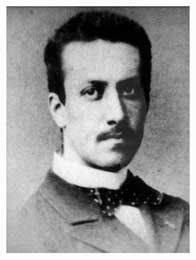|
Nyanatiloka Thera
Ven. Nyanatiloka Mahathera (19 February 1878, Wiesbaden, Germany – 28 May 1957, Colombo, Ceylon), born as Anton Walther Florus Gueth, was one of the earliest Westerners in modern times to become a Bhikkhu, a fully ordained Buddhist monk. Early life and education Nyanatiloka was born on 19 February 1878 in Wiesbaden, Germany, as Anton Walther Florus Gueth. His father was Anton Gueth, a professor and principal of the municipal Gymnasium of Wiesbaden, as well as a private councillor. His mother's name was Paula Auffahrt. She had studied piano and singing at the Royal Court Theatre in Kassel. He studied at the Königliche Realgymnasium (Royal Gymnasium) in Wiesbaden from 1888 to 1896. From 1896 to 1898 he received private tuition in music theory and composition, and in playing the violin, piano, viola and clarinet. From 1889 to 1900 he studied theory and composition of music as well as the playing of the violin and piano at Hoch’sches Conservatorium (Hoch Conservatory) in Fr ... [...More Info...] [...Related Items...] OR: [Wikipedia] [Google] [Baidu] |
Wiesbaden
Wiesbaden () is a city in central western Germany and the capital of the state of Hesse. , it had 290,955 inhabitants, plus approximately 21,000 United States citizens (mostly associated with the United States Army). The Wiesbaden urban area is home to approximately 560,000 people. Wiesbaden is the second-largest city in Hesse after Frankfurt, Frankfurt am Main. The city, together with nearby Frankfurt am Main, Darmstadt, and Mainz, is part of the Frankfurt Rhine Main Region, a metropolitan area with a combined population of about 5.8 million people. Wiesbaden is one of the oldest spa towns in Europe. Its name translates to "meadow baths", a reference to its famed hot springs. It is also internationally famous for its architecture and climate—it is also called the "Nice of the North" in reference to the city in France. At one time, Wiesbaden had 26 hot springs. , fourteen of the springs are still flowing. In 1970, the town hosted the tenth ''Hessentag Landesfest'' (En ... [...More Info...] [...Related Items...] OR: [Wikipedia] [Google] [Baidu] |
Ceylon
Sri Lanka (, ; si, ශ්රී ලංකා, Śrī Laṅkā, translit-std=ISO (); ta, இலங்கை, Ilaṅkai, translit-std=ISO ()), formerly known as Ceylon and officially the Democratic Socialist Republic of Sri Lanka, is an island country in South Asia. It lies in the Indian Ocean, southwest of the Bay of Bengal, and southeast of the Arabian Sea; it is separated from the Indian subcontinent by the Gulf of Mannar and the Palk Strait. Sri Lanka shares a maritime border with India and Maldives. Sri Jayawardenepura Kotte is its legislative capital, and Colombo is its largest city and financial centre. Sri Lanka has a population of around 22 million (2020) and is a multinational state, home to diverse cultures, languages, and ethnicities. The Sinhalese are the majority of the nation's population. The Tamils, who are a large minority group, have also played an influential role in the island's history. Other long established groups include the Moors, the Burghers, ... [...More Info...] [...Related Items...] OR: [Wikipedia] [Google] [Baidu] |
Immanuel Kant
Immanuel Kant (, , ; 22 April 1724 – 12 February 1804) was a German philosopher and one of the central Enlightenment thinkers. Born in Königsberg, Kant's comprehensive and systematic works in epistemology, metaphysics, ethics, and aesthetics have made him one of the most influential figures in modern Western philosophy. In his doctrine of transcendental idealism, Kant argued that space and time are mere "forms of intuition" which structure all experience, and therefore that, while " things-in-themselves" exist and contribute to experience, they are nonetheless distinct from the objects of experience. From this it follows that the objects of experience are mere "appearances", and that the nature of things as they are in themselves is unknowable to us. In an attempt to counter the skepticism he found in the writings of philosopher David Hume, he wrote the '' Critique of Pure Reason'' (1781/1787), one of his most well-known works. In it, he developed his theory of ... [...More Info...] [...Related Items...] OR: [Wikipedia] [Google] [Baidu] |
Phaedo
''Phædo'' or ''Phaedo'' (; el, Φαίδων, ''Phaidōn'' ), also known to ancient readers as ''On The Soul'', is one of the best-known dialogues of Plato's middle period, along with the ''Republic'' and the ''Symposium.'' The philosophical subject of the dialogue is the immortality of the soul. It is set in the last hours prior to the death of Socrates, and is Plato's fourth and last dialogue to detail the philosopher's final days, following ''Euthyphro'', '' Apology'', and ''Crito''. One of the main themes in the ''Phaedo'' is the idea that the soul is immortal. In the dialogue, Socrates discusses the nature of the afterlife on his last day before being executed by drinking hemlock. Socrates has been imprisoned and sentenced to death by an Athenian jury for not believing in the gods of the state (though some scholars think it was more for his support of " philosopher kings" as opposed to democracy) and for corrupting the youth of the city. By engaging in dialectic with ... [...More Info...] [...Related Items...] OR: [Wikipedia] [Google] [Baidu] |
Plato
Plato ( ; grc-gre, Πλάτων ; 428/427 or 424/423 – 348/347 BC) was a Greek philosopher born in Athens during the Classical period in Ancient Greece. He founded the Platonist school of thought and the Academy, the first institution of higher learning on the European continent. Along with his teacher, Socrates, and his student, Aristotle, Plato is a central figure in the history of Ancient Greek philosophy and the Western and Middle Eastern philosophies descended from it. He has also shaped religion and spirituality. The so-called neoplatonism of his interpreter Plotinus greatly influenced both Christianity (through Church Fathers such as Augustine) and Islamic philosophy (through e.g. Al-Farabi). In modern times, Friedrich Nietzsche diagnosed Western culture as growing in the shadow of Plato (famously calling Christianity "Platonism for the masses"), while Alfred North Whitehead famously said: "the safest general characterization of the European philosophical tra ... [...More Info...] [...Related Items...] OR: [Wikipedia] [Google] [Baidu] |
Weltschmerz
(; literally "world-pain") is a literary concept describing the feeling experienced by an individual who believes that reality can never satisfy the expectations of the mind, resulting in "a mood of weariness or sadness about life arising from the acute awareness of evil and suffering". The term was coined by the German Romantic author Jean Paul in his 1827 novel ''Selina'', and in its original definition in the ' by the Brothers Grimm, it denotes a deep sadness about the insufficiency of the world (). The translation can differ depending on context; in reference to the self it can mean "world-weariness", while in reference to the world it can mean "the pain of the world". The worldview of ''Weltschmerz'' has been retroactively seen as widespread among Romantic and decadent authors such as Jean Paul, the Marquis de Sade, Lord Byron, Giacomo Leopardi, William Blake, Charles Baudelaire, Paul Verlaine, François-René de Chateaubriand, Oscar Wilde, Alfred de Musset, Mikhail Lerm ... [...More Info...] [...Related Items...] OR: [Wikipedia] [Google] [Baidu] |
Maria-Laach
Maria Laach Abbey (in German: ''Abtei Maria Laach'', in Latin: ''Abbatia Maria Lacensis'' or ''Abbatia Maria ad Lacum'') is a Benedictine abbey situated on the southwestern shore of the Laacher See (Lake Laach), near Andernach, in the Eifel region of the Rhineland-Palatinate in Germany. It is a member of the Beuronese Congregation within the Benedictine Confederation. The abbey was built in the 11th-12th centuries and was originally known as "Abtei Laach" ("Abbatia Lacensis" or "Laach Abbey", meaning the "Lake Abbey") until 1862 when the Jesuits added the name "Maria". First Benedictine foundation Founded in 1093 as a priory of Affligem Abbey (in modern Belgium) by the first Count Palatine of the Rhine Heinrich II von Laach and his wife Adelaide of Weimar-Orlamünde, widow of Hermann II of Lotharingia, Laach became an independent house in 1127, under its first abbot, Gilbert. Affligem itself had been founded by Hermann. Although the abbey was founded by a prominent (although ... [...More Info...] [...Related Items...] OR: [Wikipedia] [Google] [Baidu] |
The Imitation Of Christ
''The Imitation of Christ'', by Thomas à Kempis, is a Christian devotional book first composed in Medieval Latin as ''De Imitatione Christi'' ( 1418–1427).''An introductory Dictionary of Theology and Religious studies'', by Orlando O. Espín, James B. Nickoloff 2007 p. 609. The devotional text is divided into four books of detailed spiritual instructions: (i) "Helpful Counsels of the Spiritual Life", (ii) "Directives for the Interior Life", (iii) "On Interior Consolation", and (iv) "On the Blessed Sacrament". The devotional approach of ''The Imitation of Christ'' emphasises the interior life and withdrawal from the mundanities of the world, as opposed to the active imitation of Christ practised by other friars. The devotions of the books emphasise devotion to the Eucharist as the key element of spiritual life. ''The Imitation of Christ'' is a handbook for the spiritual life arising from the Devotio Moderna movement, which Thomas followed. The ''Imitation'' is perhaps the m ... [...More Info...] [...Related Items...] OR: [Wikipedia] [Google] [Baidu] |
Paris Conservatoire
The Conservatoire de Paris (), also known as the Paris Conservatory, is a college of music and dance founded in 1795. Officially known as the Conservatoire National Supérieur de Musique et de Danse de Paris (CNSMDP), it is situated in the avenue Jean Jaurès in the 19th arrondissement of Paris, France. The Conservatoire offers instruction in music and dance, drawing on the traditions of the 'French School'. Formerly the conservatory also included drama, but in 1946 that division was moved into a separate school, the Conservatoire National Supérieur d'Art Dramatique (CNSAD), for acting, theatre and drama. Today the conservatories operate under the auspices of the Ministry of Culture and Communication and are associate members of PSL University. The CNSMDP is also associated with the Conservatoire National Supérieur de Musique et de Danse de Lyon (CNSMDL). History École Royale de Chant On 3 December 1783 Papillon de la Ferté, ''intendant'' of the Menus-Plaisirs du Roi, pro ... [...More Info...] [...Related Items...] OR: [Wikipedia] [Google] [Baidu] |
Charles-Marie Widor
Charles-Marie-Jean-Albert Widor (21 February 1844 – 12 March 1937) was a French organist, composer and teacher of the mid-Romantic era, most notable for his ten organ symphonies. His Toccata from the fifth organ symphony has become one of the best known and most often performed works for organ. As of 2022, he is the longest-serving organist of Saint-Sulpice in Paris, a role he held for 63 years (January 1870 – 31 December 1933). He also was organ professor at the Paris Conservatory from 1890 to 1896 (following César Franck) and then he became professor of composition at the same institution, following Théodore Dubois. Widor was a prolific composer, writing music for organ, piano, voice and ensembles. Apart from his ten organ symphonies, he also wrote three symphonies for orchestra and organ, several songs for piano and voice, four operas and a ballet. He was one of the first composers to use the term "symphony" for some of his organ compositions, helped in this by the o ... [...More Info...] [...Related Items...] OR: [Wikipedia] [Google] [Baidu] |









